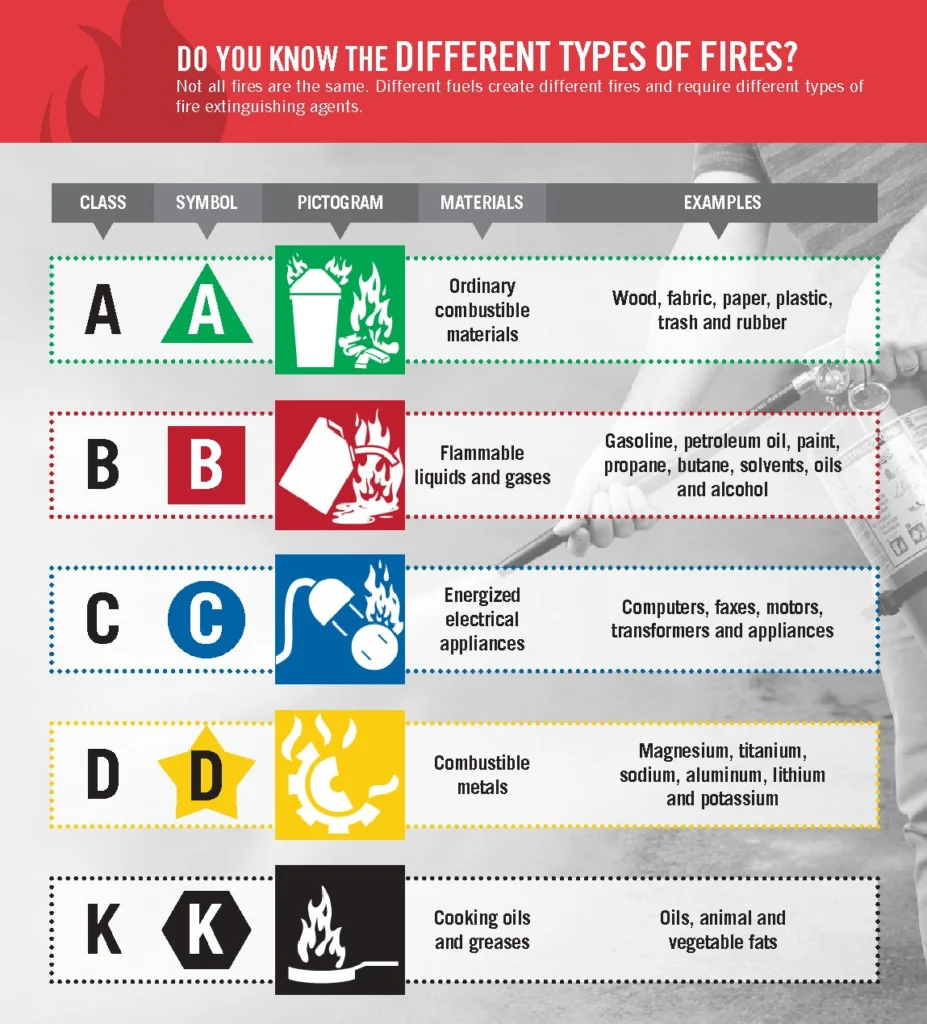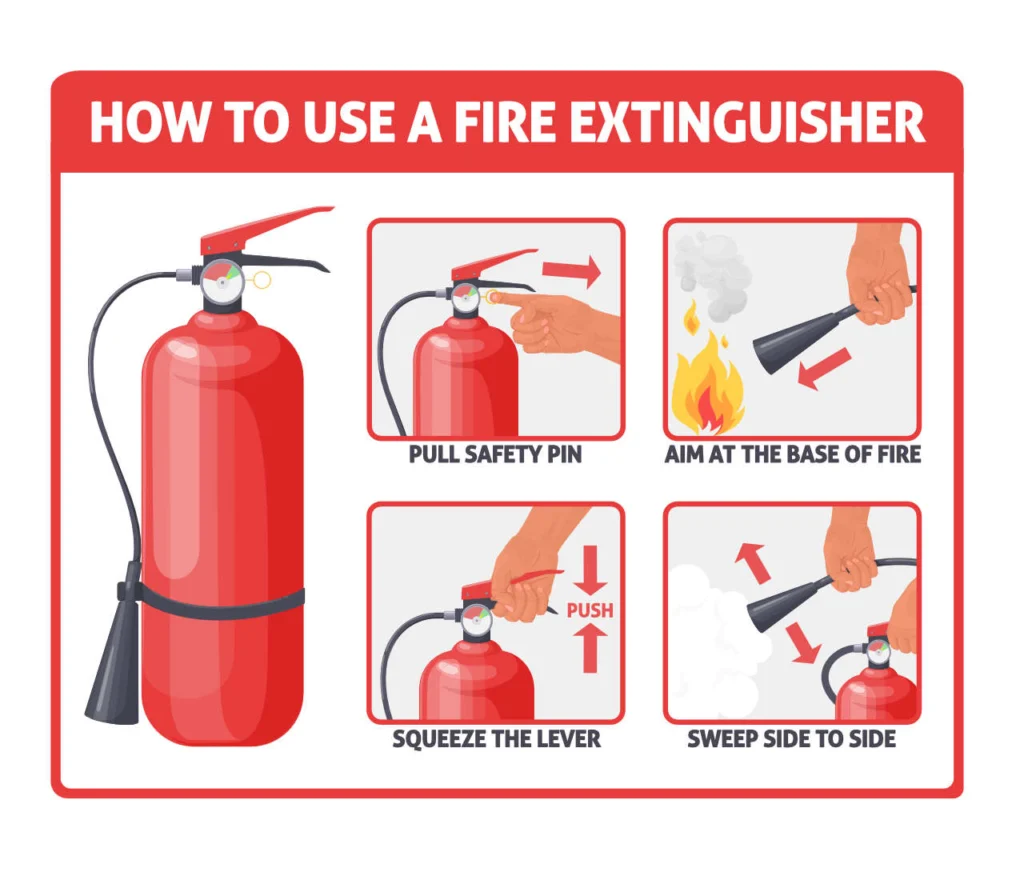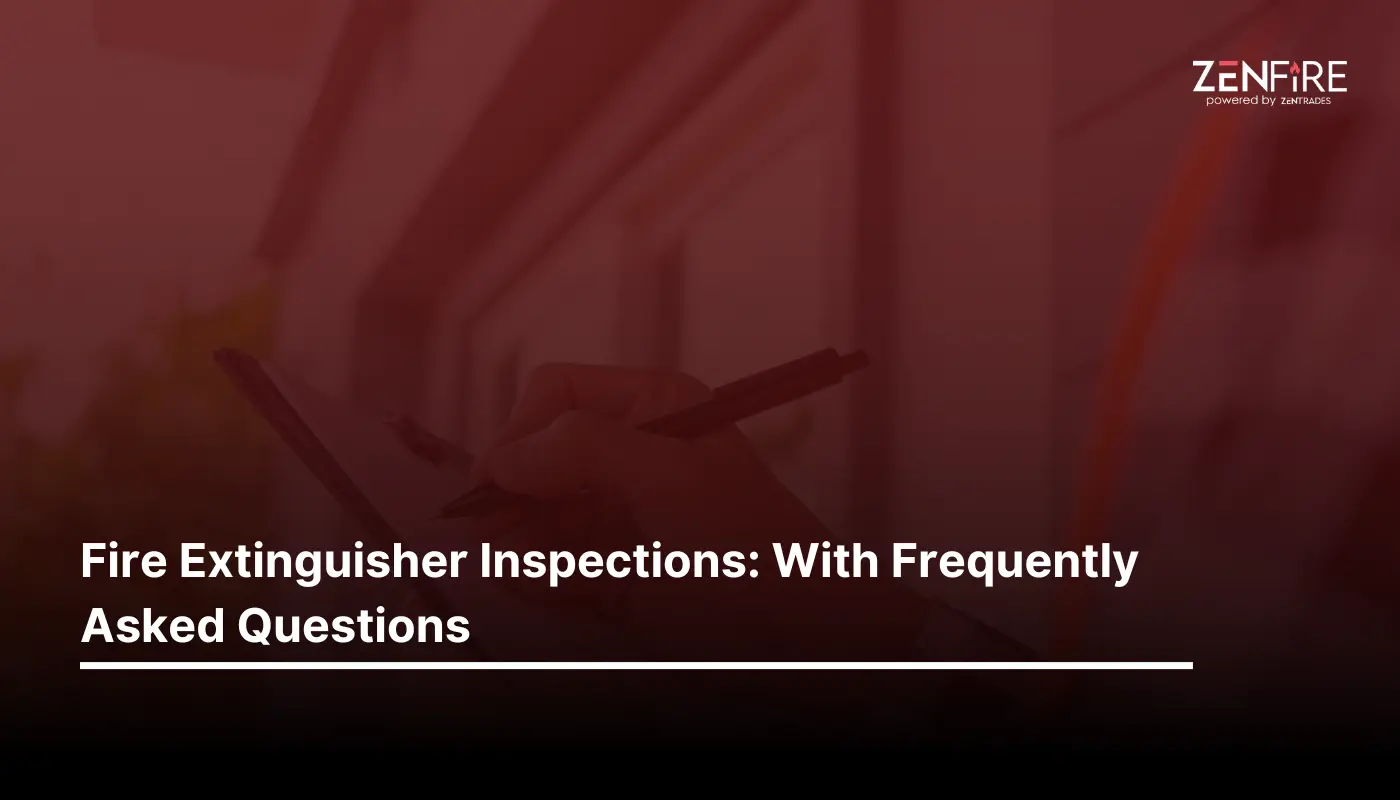Fire Extinguisher Inspections: With Frequently Asked Questions
- Field Service Management
- 9 Min Read
Fire extinguishers are ubiquitous fire safety equipment that provides essential fire protection and prevention aid. According to Fire Industry Association, the percentage of fires successfully extinguished by portable fire extinguishers has leaped from a mere 80% in 2003 to a staggering 93% in 2021.
A fire extinguisher is a common sight nowadays. Wherever you go, be it a residential building, an industrial facility, a commercial establishment, or even an aircraft, you will find at least one portable fire extinguisher kept around as a primary fire safety tool.
This blog will provide safety tips and answer the top 11 frequently asked questions.
Here What We Cover
11 Tips /Questions answered for Fire Extinguishers inspection.
1. What Are Fire Extinguisher Inspections?
A fire extinguisher inspection is a thorough check on the equipment’s functionality to guarantee its efficiency during disasters. It involves testing and maintaining the mechanical parts of the fire extinguisher by a fire safety professional.
2. What Are The Different Classes Of Fires?
There are 5 different kinds of fires that you need to safeguard yourself against. Class A, B, C, D, and K.
Class A: Fire caused by ordinary combustible materials like wood, paper, cloth, rubber, certain plastics, etc.
Class B: Flammable liquid fire caused by Gasoline, kerosene, tars, solvents, alcohols, and other oil-based materials. It also comprises flammable gasses like propane, hydrogen, acetylene, methane, etc.
Class C: Electrical fire caused by electrical components like faulty wires, meter box, etc.
Class D: Fire caused by combustible metals like magnesium, titanium, zirconium, sodium, potassium, lithium, etc.
Class K: Fire caused by kitchen oils and grease.


Use our free invoice template now
Make winning quotes in minutes—for any industry and any job.
3. What Are The Different Types Of Fire Extinguishers Available?
Broadly categorized, six different types of fire extinguishers are available in the market to help you combat various kinds of fire. If you want to know how to choose the right fire extinguisher, we also have a dedicated blog for that..
Water-based Fire Extinguishers: mitigate class A fires caused by combustible materials like paper, wood, cloth, etc. They use pressurized water, sometimes mixed with other additives, to strengthen the agent, enhance cooling, and reduce surface tension for faster cooling.
Carbon Dioxide Extinguishers: used during fires caused by flammable liquids or electricity, catering to fire classes B and C. They have a horn-like nozzle, a distinguished feature of these extinguisher types. They work by cutting off the oxygen component in the fire by displacing it with carbon dioxide, eventually forcing the fire to extinguish.
Foam Fire Extinguishers: generally used for class A and B fires, combatting against combustible material and volatile liquids. These extinguishers work by coating the fire with a layer of foam and cutting off the oxygen supply, preventing further reignition of the spark.
Wet Fire Extinguishers: help combat kitchen fires, which fall under class K. These extinguishers utilize the process of saponification, that is, forming a foam layer of foam-like substance when reacting with fire. This extinguishes the fire quickly and further prevents the release of flammable vapors that can cause reignition.
Dry Fire Extinguishers: This type of extinguisher caters to fires caused by combustible substances, volatile liquids, and electric fires—class A, B, and C. It utilizes dry chemicals that help form a barrier against the flammable substances and the surrounding oxygen, cutting off its supply. The dry chemical absorbs the heat and lowers the temperature of the fuel, preventing reignition.
4. How Do You Operate A Fire Extinguisher?
Handling portable fire extinguishers requires proper training to avoid mishandling equipment in hazardous situations. Four basic steps are generally followed when operating a fire extinguisher.
Usually referred to as the PASS method, the following are the steps:
Pull: pull the pin located at the top of the fire extinguisher.
Aim: aim the nozzle at the firebase. Make sure to spray test it once to assess the stream level so you can accordingly adjust your position and aim it correctly.
Squeeze: next, squeeze the handle to discharge the suppressing agents from the nozzle.
Sweep: last step, sweep the nozzle from side to side, pointing at the base of the fire. Cover the entire fire area until a thick chemical layer has subsided, preventing the fuel from reigniting.

5. When Fire Extinguishers Should Be Inspected?
According to OSHO’s sstandards and guidelines, it mandates monthly and annual fire extinguisher inspections. You can check out this blog to learn more about OSHA fire extinguisher requirements in this blog.
Fire extinguishers should also undergo hydrostatic testing once every five years. A hydrostatic test ensures they can endure the pressure of the components filled with.
6. What Do the Fire Extinguisher Inspection Procedures Involve?
The intensity of the fire extinguisher inspections depends on whether the inspection occurrence is monthly or annual.
However, both inspection processes examine the equipment’s pressure gauge, scanning pathways, areas or possibilities of hindrance in grabbing the extinguisher, and the tool’s location.
After the inspection procedure, whether monthly or annual, an inspection tag must be applied to the equipment for future reference.
A dated inspection tag must showcase:
the date of inspection
name of the person
Download NFPA 10, Standard for Portable Fire Extinguishers
7. Who Can Inspect Fire Extinguishers?
Anyone with the knowledge and experience can perform monthly inspections and does not need a certified inspector. However, the annual inspection process requires the presence of an accredited fire professional.
8. How Do You Perform Testing And Maintenance Of A Fire Extinguisher?
For a monthly fire extinguisher inspection, the inspection testing procedures involve:
Confirming visible signs that point to the nearest fire extinguisher.
Ensuring that the fire extinguisher is placed at an optimum location
Confirming the no obstruction presence or chances of hindrance makes it challenging to reach the extinguisher
Examining the pressure gauge to ensure the extinguisher is charged for efficient usage.
For annual inspections of fire extinguishers, the process goes like this:
Performing a basic check according to the inspection regulation standards of the manufacturer.
Ensure all parts of the equipment function properly and are free from rust, corrosion, or damage. This also includes protecting hoses and pipes from visible tears and punctures.
Recharging or checking the extinguisher’s pressure gauge to ensure it is adequately charged for proper functioning.
9. How Should You Prepare For A Fire Extinguisher Inspection?
The first step towards preparing for your equipment examination is to find out where you can have your fire extinguisher inspected.
You can perform a preliminary visual inspection of your fire extinguisher beforehand to assess its overall performance and functionality.
Here’s a step-by-step guide that you can follow to ensure adequate preparation for your fire extinguisher inspection by a certified professional:
Step 1: Get familiar with the regulation codes of your area, building, and manufacturer.
Step 2: Keep previous documents handy, such as previous inspection reports, maintenance records regular inspections, or service agreements.
Step 3: conduct a visual inspection of your fire extinguisher. Make sure all parts are free from damage and comply with proper functioning methods.
Step 4: Check the extinguisher’s inspection tag and gauge the pressure unit to make sure they are within operational range
Step 5: Finally, schedule your inspection with a certified and professional fire safety inspector to thoroughly examine your extinguisher.
Get posts like this in your inbox.
Keep learning how to run a 5-star business with our bi-weekly newsletter.
10. What Should Be The Frequency of Fire Extinguisher Self-Inspections?
You can conduct monthly fire extinguisher inspections with or without the help of professional technicians. Monthly visual inspections are a great way to ensure regular checks and minimize the chances of randomly breaking your fire extinguisher.
Since monthly fire extinguisher inspections do not legally require a service professional, unlike annual inspections, monthly inspections of your units can be much easier and without any trouble.
You can also conduct an annual inspection of your fire extinguisher before scheduling a professional yearly inspection to assess your unit’s performance and functionality.
11. What Happens if Fire Extinguishers Are Not Getting Required Annual Preventative Maintenance and Inspections?
Failing to conduct the required annual fire extinguisher inspection can have severe consequences for you and your facility.
The primary repercussion of not conducting your annual maintenance checks is the increased risk of a fire hazard, which can cause extensive damage. In a severe fire emergency, your equipment might fail to function appropriately, endangering lives and property. Failure to comply with the fire safety codes and regulations can and will result in penalty fines and legal actions from regulatory bodies.
You will also be unable to reap the total insurance coverage benefits, which might result in you paying the full repercussions of the damage caused by the fire incident.
Lastly, your reputation as a building owner or manager will be tarnished, and you will face liability concerns for affected parties such as your staff, residents, or other passersby.

Explore a better way to grow your business. Book a free demo now!
Get organized, win jobs, and wow customers.
Book A Free Demo with ZenTrades Today!
Related Reading
Why Your Field Software Management Software Needs QuickBooks Integration
ZenTrades Why Your Field Service Management Software Needs QuickBooks Integration Read More Request Demo...
Read MoreZenTrades How To Manage Electrical Service Agreements Like...
Read MoreZenTrades The Best 5 Jobber Alternatives In 2023...
Read More

